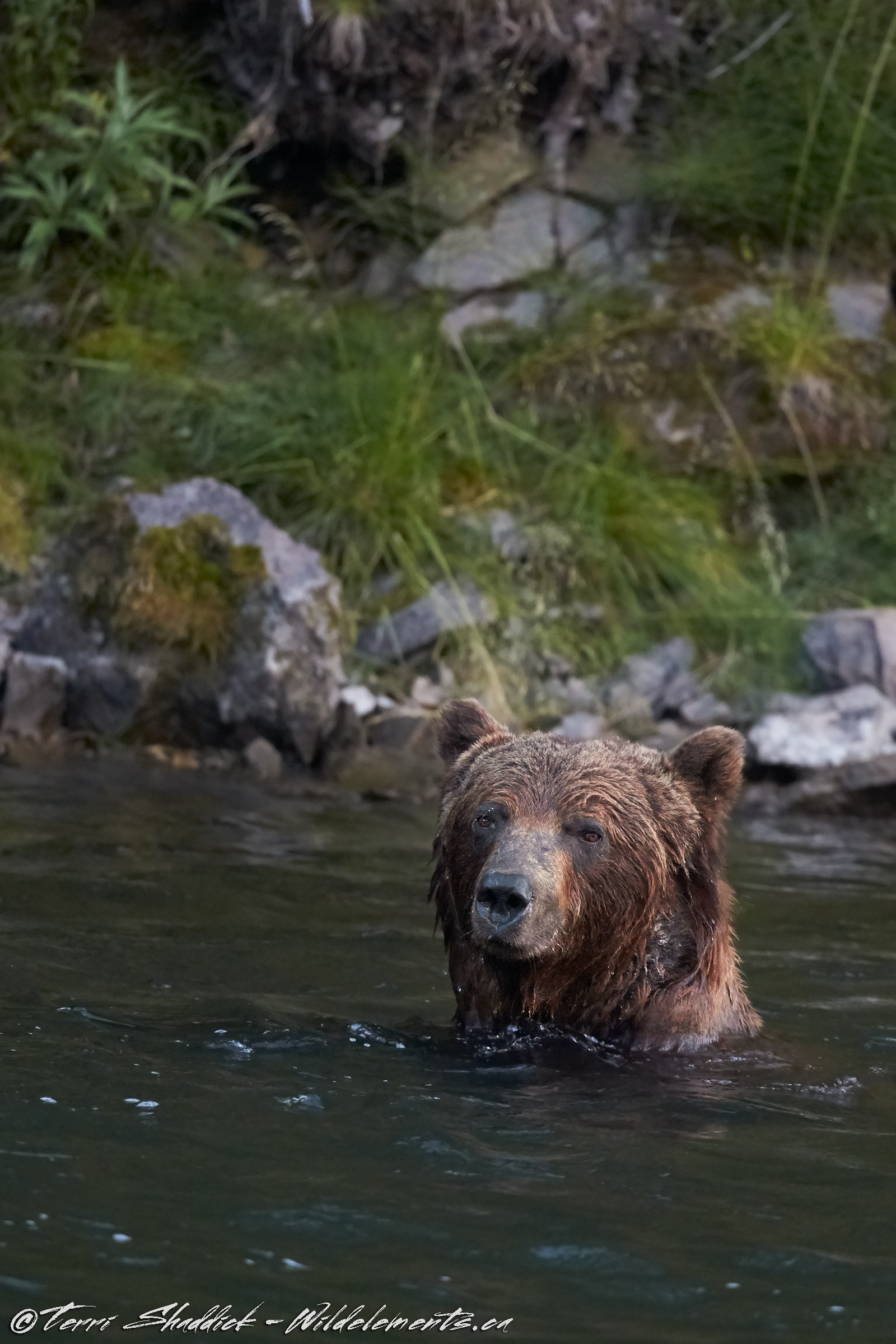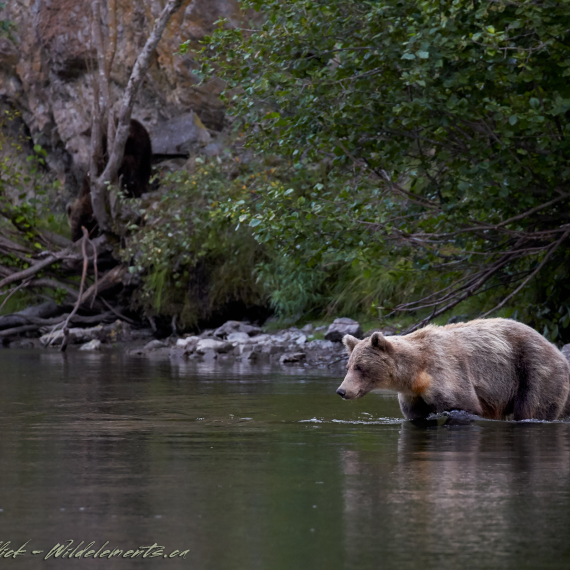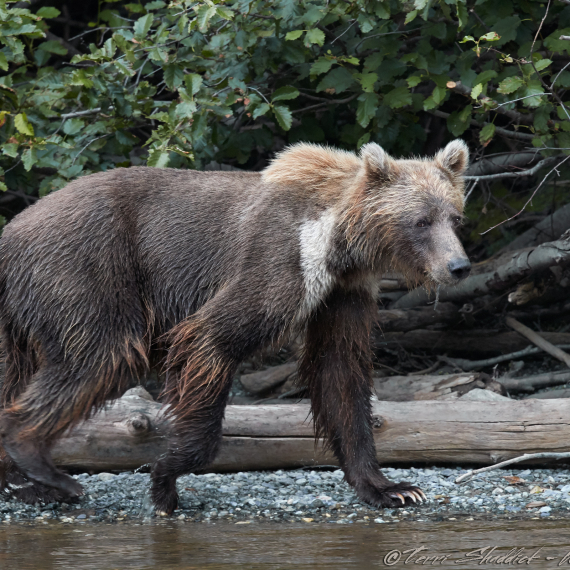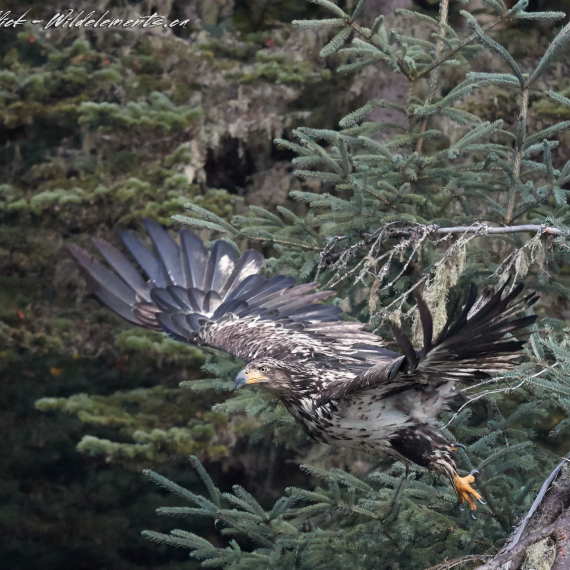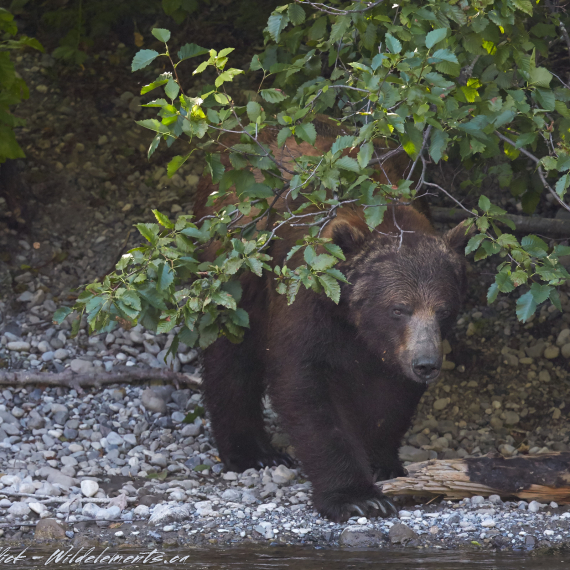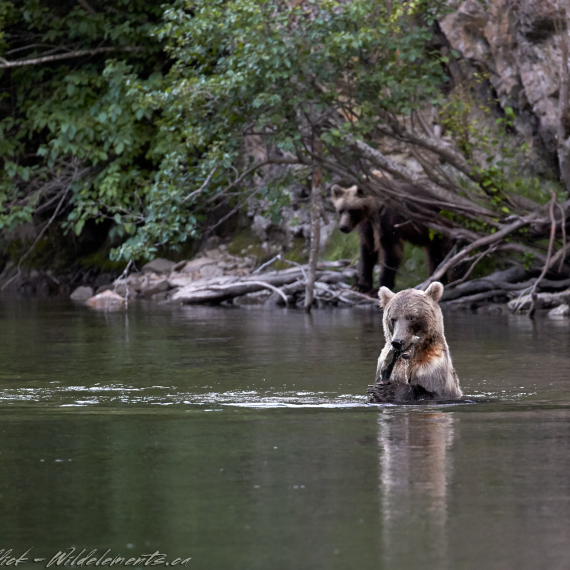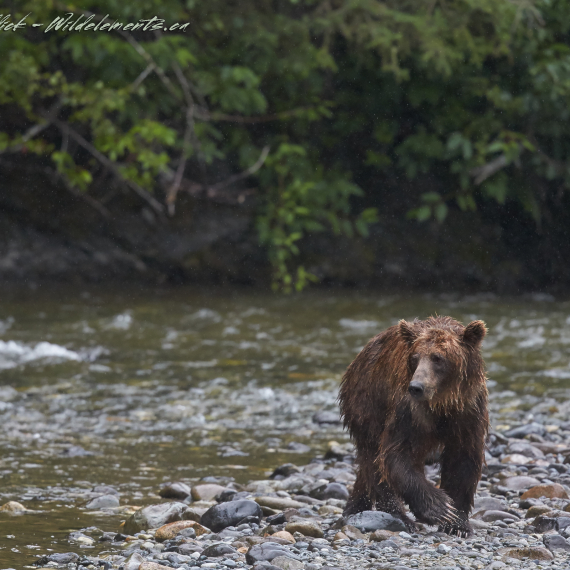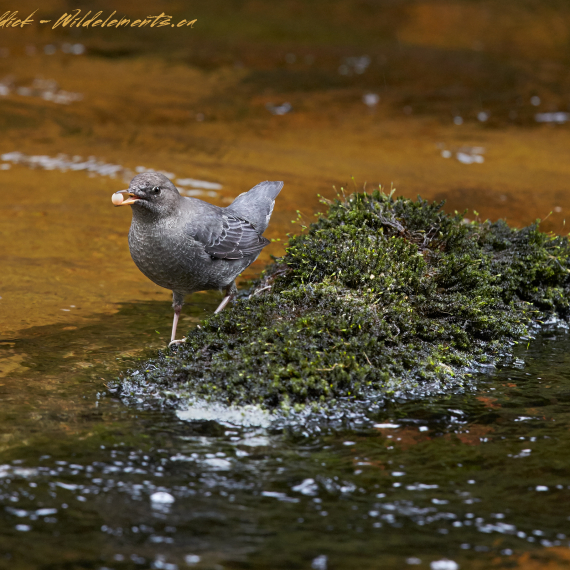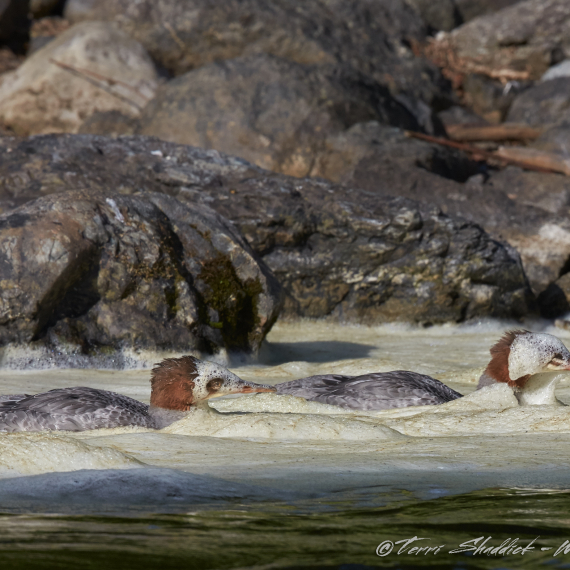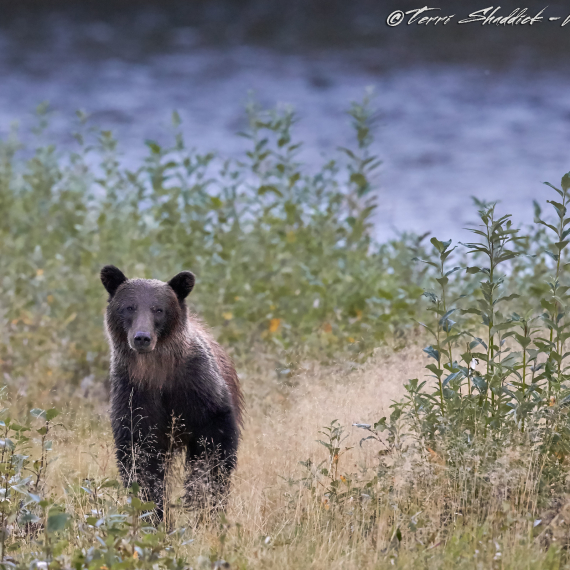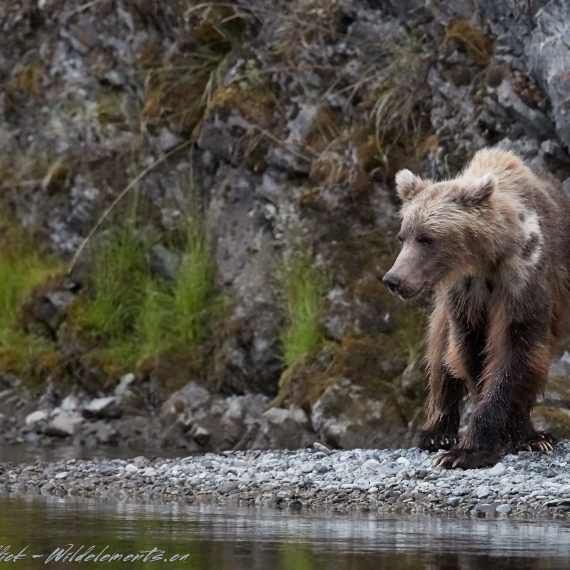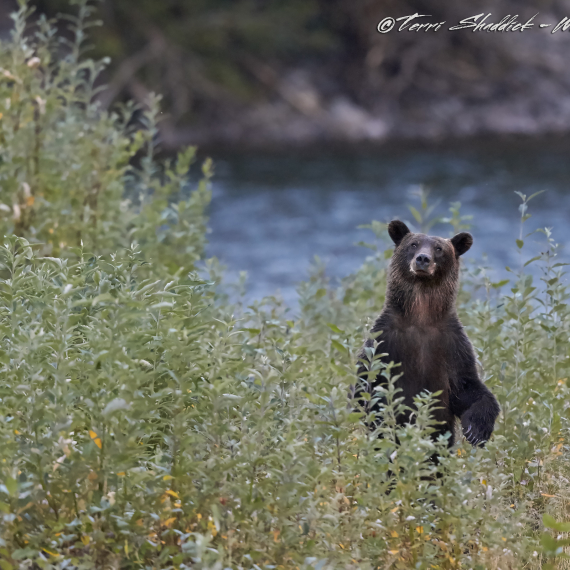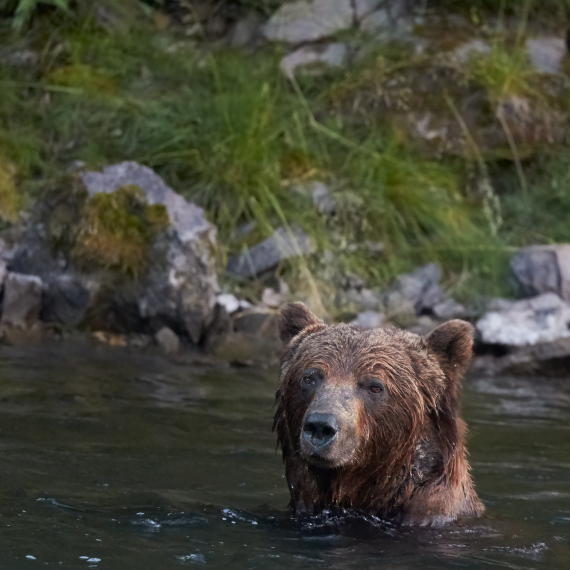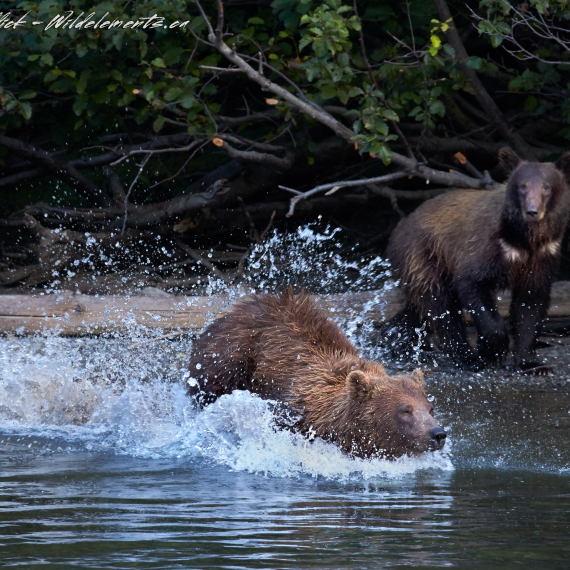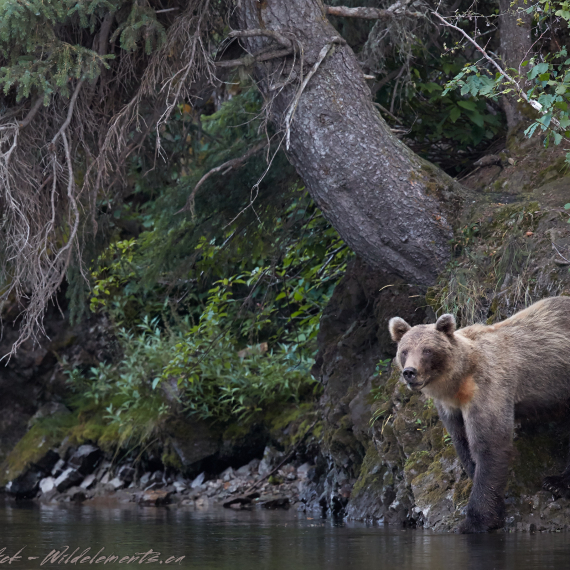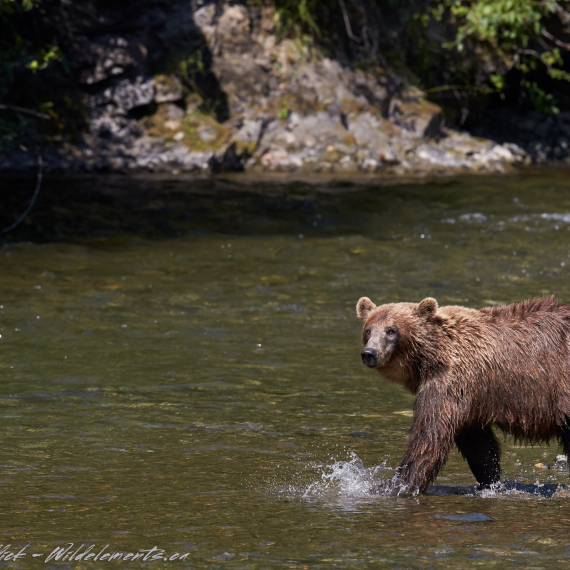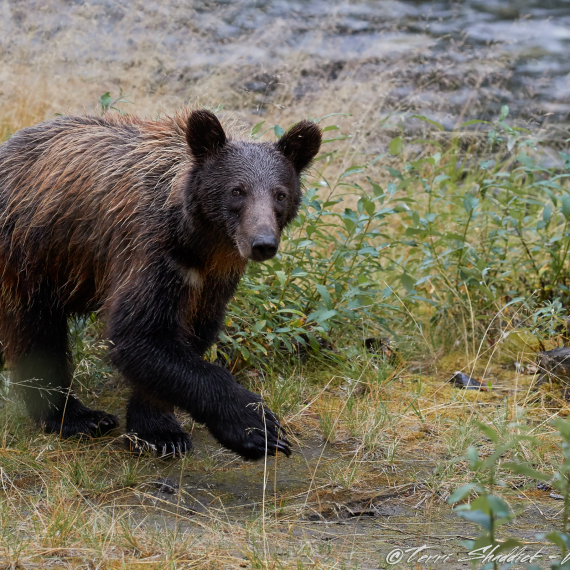When photographing Grizzly Bears that are fishing, it’s always interesting to watch the different methods that different bears employ to catch the fish (and also cool to see the differences in different regions). While on the Fishing Grizzlies of the Taku trip in 2016, it seemed like the most common technique was what I like to call the “Splash and Grab”, where the bear would pounce into the water from the shore and make a big splash and come out with a fish (see Learning from Mom for an example). I haven’t seen this done elsewhere on the other trips I have been on with fishing bears.
This bear, however, went in neck deep, and since we can’t see under the water, I can only assume that it was using its arms and legs to search for fish which then it would bring out with its front paws. On this same trip a group witnessed a bear go completely under water (basically disappeared under the surface) and come out with a fish. It’s hard to know why one bear goes about it one way and another bear does something different, especially when they are fishing in the same area.
If you would like to witness some of these different fishing techniques for yourself first hand, contact Natural Art Images.
If you are interested in purchasing this image, or any other images on my site, please contact me [email protected].
Taken: August 2, 2016
Location: Taku River, British Columbia
Camera: Canon EOS-1D X
Lens: Canon EF 500mm f/4L IS II USM + 1.4x III extender
Focal Length: 700mm
Aperture: f/5.6
ISO: 6400
Exposure:1/250
About This Image
When photographing Grizzly Bears that are fishing, it’s always interesting to watch the different methods that different bears employ to catch the fish (and also cool to see the differences in different regions). While on the Fishing Grizzlies of the Taku trip in 2016, it seemed like the most common technique was what I like to call the “Splash and Grab”, where the bear would pounce into the water from the shore and make a big splash and come out with a fish (see Learning from Mom for an example). I haven’t seen this done elsewhere on the other trips I have been on with fishing bears.
This bear, however, went in neck deep, and since we can’t see under the water, I can only assume that it was using its arms and legs to search for fish which then it would bring out with its front paws. On this same trip a group witnessed a bear go completely under water (basically disappeared under the surface) and come out with a fish. It’s hard to know why one bear goes about it one way and another bear does something different, especially when they are fishing in the same area.
If you would like to witness some of these different fishing techniques for yourself first hand, contact Natural Art Images.
If you are interested in purchasing this image, or any other images on my site, please contact me [email protected].
Taken: August 2, 2016
Location: Taku River, British Columbia
Camera Specs
Camera: Canon EOS-1D X
Lens: Canon EF 500mm f/4L IS II USM + 1.4x III extender
Focal Length: 700mm
Aperture: f/5.6
ISO: 6400
Exposure:1/250
About this image
This Lone Wolf is a member of one of Yellowstone National Park’s wolf packs. Somehow he got separated from the rest of the pack, so he sat on this snowy ridge and howled for the other member of the pack, waiting for them to respond so he could join them again. If you have ever heard a wolf howl, you will not be surprised that the sound can travel up to 15km away.
Yellowstone National Park is home to 10 different wolf packs, and at least 98 wolves live within the park boundaries (as of January 2016). I was interested to learn that the main cause of death of the wolves within the park was actually other wolves. In the winter the majority of their diet will consist of Elk (over 90%), while in the summer they will consume less elk and more Bison.
If you are interested in purchasing this image, or any other images on my site, contact Terri Shaddick at [email protected].
Taken: December 24, 2016
Location: Yellowstone National Park, Wyoming
Camera Specs
Camera: Canon EOS 5D Mark IV
Lens: Canon EF 500mm f/4L IS II USM +2.0x III extender
Focal Length: 1000mm
Aperture: f/8
ISO: 250
Exposure: 1/500


